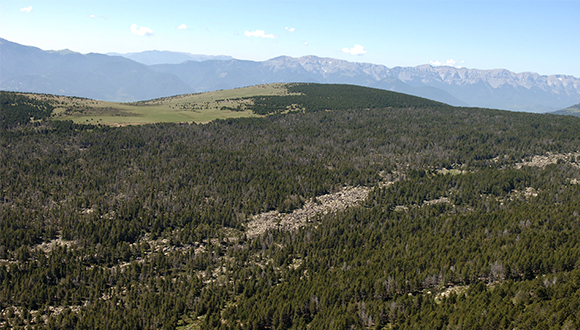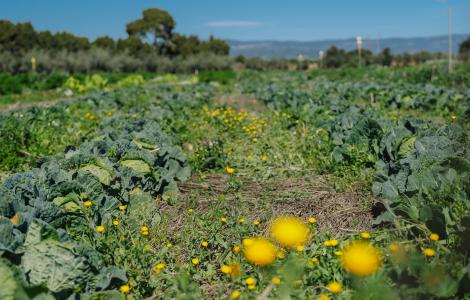Mathematics in the fight against forest drought
A study by CTFC and CREAF scientists has led to the development of a mathematical model which predicts drought stress in forests. The research shows that forest drought stress depends on climatic conditions as well as vegetation and soil characteristics.

The new study, led by Miquel de Cáceres, researcher from the Catalonia Forest Technology Centre (CTFC) and associate CREAF researcher, and with the participation of CREAF researchers Jordi Martínez-Vilalta, Lluís Coll, Rafael Poyatos and Lluís Brotons, was undertaken using data from Spanish forest inventories. The study has shown that over the past 30 years the hydric stress of Catalonian forests has increased in most of the cases considered; this increased stress is mainly due to increased forested area and tree density rather than unfavourable climatic conditions. Rural abandonment and decreased intensity of forest management have been the principal causes for these changes.
The mathematical model results from crossing the hydric balance data (water inputs minus water outputs) with data from forest inventories. “Including the type and structure of vegetation as well as soil data in the hydric balance model is key for obtaining reliable predictions about how drought will affect a given area,” says Jordi Martínez-Vilalta. Also, an ongoing reliable estimation of plant drought stress can be obtained by combining the model with daily meteorological data.
Usefulness for regional management strategies
Over the past 30 years the hydric stress of Catalonian forests has increased in most of the cases considered; this increased stress is mainly due to increased forested area and tree density.
The research has served for the development of a drought effect prediction system at the regional level; this is of consequence since mitigation and adaptation strategies are applied at this scale. Martínez-Vilalta adds that in fact the “results support the idea that in some areas increased forest management could turn back this increase in drought stress currently endured by our forests.”
The study also highlights the importance of forest inventories. “Characterizing the composition and structure of a forest is essential for planning its management,” says the ecologist. He adds, “knowing which species are present in the plant community as well as soil characteristics makes it possible to have a clearer picture about the effects of water shortage since each species has a different strategy for dealing with the effects of drought.” In general, forest inventories are an important tool for understanding how vegetation changes in time and space, as well as how forests respond to environmental change.
Article:
De Cáceres M., Martínez-Vilalta J., Coll Ll., Llorens P., Casals P., Poyatos., Pausas J. G., Brotons L. Coupling a water balance model with forest inventory data to predict drought stress: the role of forest estructural changes vs. climate changes. Agricultural and Forest Meteorology (2015), 213 (77-90), doi:10.1016/j.agrformet.2015.06.012






